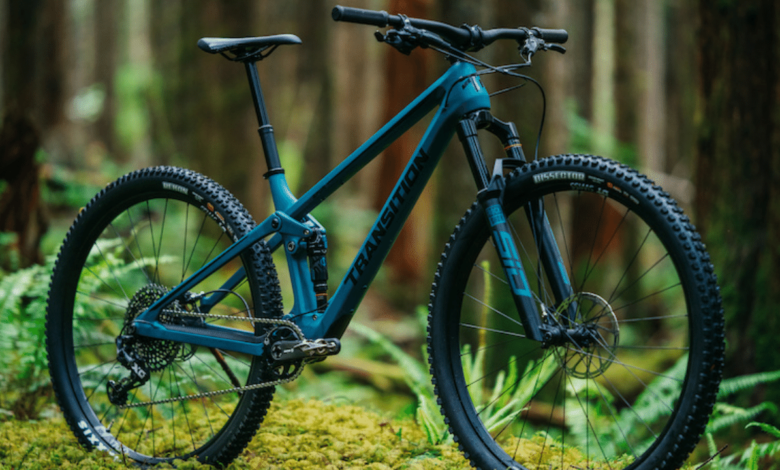Exploring the Transition Spur: A Comprehensive Guide to a Versatile Mountain Bike
Transition Spur

The Transition Spur is a mountain bike that has rapidly gained popularity among cycling enthusiasts for its innovative design and versatile capabilities. Often categorized as a “down-country” bike, it combines the lightweight efficiency of a cross-country bike with the robustness and agility of a trail bike. This article delves into the various aspects of the Transition Spur, highlighting its design, performance, and suitability for different riding conditions.
Design and Technical Specifications
The Transition Spur is engineered to offer a balanced riding experience with 120mm of travel on both the front and rear, though it allows for adjustments to decrease the rear travel to 100mm. This adaptability is made possible through the use of a different rear shock, catering to riders’ preferences for either a more aggressive or a more conservative ride. The bike’s architecture emphasizes a “Flex Stay” rear triangle, which eliminates the need for a rear pivot, reducing weight and maintenance while enhancing the frame’s stiffness.
Performance Across Terrains
The Transition Spur is celebrated for its exceptional performance across various terrains. Its geometry is carefully crafted to handle demanding climbs as well as speedy descents. With a head tube angle of 66 degrees and an effective seat tube angle of 76.2 degrees, the Spur positions the rider in an optimal balance of comfort and control, making it ideal for long rides and technical challenges alike. The inclusion of top-tier components like SRAM’s GX, X01, and XX1 AXS drivetrains, along with RockShox SID suspension, complements its robust frame, making it a top contender in its category.
Comparative Analysis
When compared to other bikes in the same category, such as the Revel Ranger, the Transition Spur stands out for its versatility and all-round capabilities. While some bikes may excel in either climbing or descending, the Spur offers a well-rounded performance that does not compromise on speed or handling, regardless of the terrain. Its ability to be fine-tuned for different trails and rider preferences further enhances its appeal as a go-to mountain bike for various cycling adventures.
Customization and Upgrades
The Transition Spur’s design accommodates numerous customization options to suit different styles and needs. From its adjustable rear travel to various build kits, riders can personalize their bike to match their riding style. Upgrades can include different suspension setups, drivetrain options, and tire choices to optimize the bike for specific conditions, from endurance races to casual trail riding.
Real-World Owner Experiences
Feedback from owners underscores the Spur’s reputation for reliability and fun. Its lightweight frame, combined with effective suspension and tire setups, allows for quick, enjoyable rides across both established trails and backcountry explorations. Many riders appreciate the bike’s ability to transition seamlessly from aggressive climbs to thrilling descents, highlighting its name as a true “Transition” in the mountain biking world.
Sustainability and Environmental Considerations
As environmental concerns become increasingly central to product design, the Transition Spur reflects a commitment to sustainability. Transition Bikes emphasizes the use of durable materials and construction methods that extend the lifespan of their bikes, thereby reducing waste. The Spur’s carbon frame not only enhances performance through lightness and strength but also incorporates eco-friendlier production processes compared to traditional methods. Such considerations are crucial for riders who value ecological responsibility alongside technical capability.
The Role of Technology in Modern Mountain Biking
The Transition Spur embodies the integration of cutting-edge technology in modern mountain biking. With features like the SRAM electronic drivetrains on higher-end models and advanced suspension technology from RockShox, the Spur is at the forefront of what is possible in bike technology. These advancements not only improve ride quality but also ensure greater reliability and ease of maintenance—key considerations that can significantly enhance the riding experience.
Community and Brand Support
Transition Bikes has cultivated a strong community around its products, and the Spur is no exception. This community is not just about sharing trails and gear advice but also extends to organized rides and events sponsored by Transition. Moreover, the company’s approachable customer service and robust dealer network mean that Spur owners receive extensive support, enhancing the overall ownership experience. This community aspect is vital, especially in niche markets like down-country mountain biking, where enthusiasts often rely on shared knowledge and experiences to make purchasing decisions and improve their riding skills.
Training and Preparation Tips for Transition Spur Riders
For those looking to maximize their performance on the Transition Spur, proper training and bike preparation are key. Riders should focus on building core strength and balance, which are crucial for handling the dynamic demands of down-country biking. Training programs might include a mix of cardio for endurance, strength exercises for bike handling, and flexibility routines to reduce the risk of injury. Additionally, regular bike maintenance, such as checking tire pressure, brake pads, and suspension setup, is vital to ensure the Spur performs at its best in various terrains.
The Future of Mountain Biking with Transition Spur
Looking ahead, the Transition Spur represents a model for future developments in mountain biking. Its blend of lightness, strength, and adaptability sets a benchmark for what riders can expect from high-performance mountain bikes. Innovations such as integrated technology for performance tracking, eco-friendly materials, and enhanced durability might be on the horizon. As biking technology evolves, bikes like the Spur could lead the way in offering more personalized and environmentally sustainable options, reshaping the mountain biking landscape.
Choosing the Right Transition Spur Build for You
Deciding on the right Transition Spur build involves considering both personal riding style and typical trail conditions. The Spur’s various builds offer options ranging from the sturdy GX setup, ideal for rough terrains, to the high-end XX1 AXS, perfect for those seeking top-of-the-line responsiveness and control. Riders should assess factors such as the typical steepness and roughness of the trails they ride, their goals for biking (competition vs. recreation), and their body type to select the build that will offer the most comfort, performance, and satisfaction.
Conclusion
The Transition Spur stands out as a versatile and capable mountain bike designed to handle a wide range of trails and conditions. From its innovative design and technical prowess to its environmental considerations and community support, the Spur represents a significant evolution in mountain biking. It offers both novices and seasoned bikers a dependable, enjoyable, and high-performance solution to their riding needs, making it a worthy consideration for anyone looking to upgrade their mountain bike experience.
FAQs about the Transition Spur
What makes the Transition Spur suitable for both climbing and descending?
The Spur’s balanced geometry, with a 66-degree head tube angle and 120mm of travel, provides a stable and responsive ride that handles well on both ascents and descents.
Can the rear travel of the Transition Spur be adjusted?
Yes, the bike comes standard with a 120mm rear shock but can be adjusted to 100mm with a shorter shock, allowing for customization based on riding preferences and conditions.
What warranty does Transition Bikes offer for the Spur?
Transition offers a lifetime warranty to the original owner against manufacturing defects, along with a crash replacement policy that includes a discount on replacement frames or parts.
How does the Transition Spur compare to the Revel Ranger?
While both bikes are designed for similar uses, the Spur is often noted for its superior downhill capabilities, making it a more versatile choice for riders who enjoy both aggressive descents and technical climbs.
What are some common upgrades for the Transition Spur?
Popular upgrades include varying the suspension setup, changing the drivetrain for different types of rides, and adjusting tire configurations to better suit specific trail conditions or riding styles.




